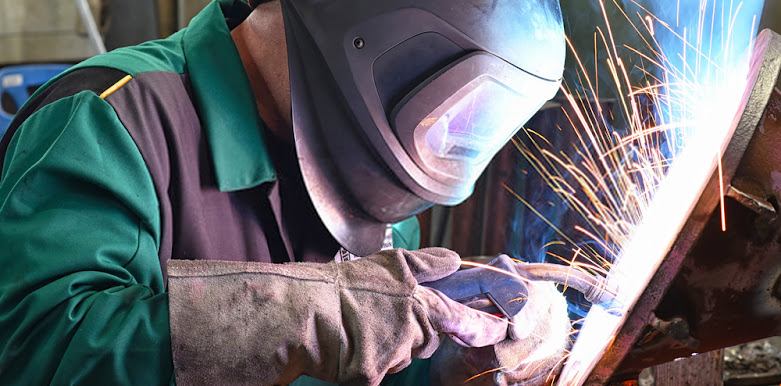What's The Best Mig Welder To Buy | Best Mig Welders in 2020 - Full Review & Guide
This is an essential guide on how to weld using an inert metal gas (MIG) welder. MIG welding is the incredible process of using electricity to melt and join pieces of metal together. MIG welding is sometimes referred to as the "hot glue gun" of the welding world and is generally regarded as one of the most available welding types.
MIG welding was developed in the 1940's, and 60 years later, the general principle is still very much the same. MIG welding uses an arc of electricity to create a short circuit between a continuously fed anode (+ the wire-feed welding gun) and a cathode ( - the metal being welded).
The heat produced by the short circuit and a non-reactive (hence inert) gas locally melts the metal and allows them to mix. Once the heat is removed, the metal begins to cool and solidify and forms a new fused metal piece.
MIG welding is useful because you can use it to weld many different metals: carbon steel, stainless steel, aluminum, magnesium, copper, nickel, silicon, bronze, and other alloys.
Here are some advantages to MIG welding:
1.The ability to join a wide range of metals and thicknesses
2.All-position welding capability
3.A good weld bead
4.A minimum of weld splatter
5.Easy to learn
Here are some disadvantages of MIG welding:
1.MIG welding can only be used on thin to medium thick metals
2. The use of an inert gas makes this type of welding less portable than arc welding, which requires no external source of shielding gas
3.Produces a somewhat sloppier and less controlled weld as compared to TIG (Tungsten Inert Gas Welding)
Flexible solution for your fabrication and maintenance/repair needs
MIG welding is an arc welding process in which a continuous solid wire electrode is fed through a welding gun and into the weld pool, joining the two base materials. Shielding gas is also sent through the welding gun and protects the weld pool from contamination. MIG stands for inert metal gas. The technical name for it is a gas metal arc welding (or GMAW), and the slang name for it is wire welding.
Safety first
Before tackling any welding project, you need to make sure you have the proper safety apparel and that any potential fire hazards are removed from the welding area. Basic welding safety apparel includes leather shoes or boots, cuff-less full-length pants, a flame-resistant, long-sleeve jacket, leather gloves, a welding helmet, safety glasses, etc. bandana or skull cap to protect the top of your head from sparks and spatter.
Metal preparation
Unlike stick and flux-cored electrodes, which have higher amounts of special additives, the solid MIG wire does not combat rust, dirt, oil, or other contaminants very well. Use a metal brush or grinder and clean down to bare metal before striking an arc. Make sure your work clamp connects to clean metal, too. Any electrical impedance will affect wire feeding performance.
Equipment preparation
Check your cables. Before striking an arc, check your welding equipment to ensure all of the cable connections are tight-fitting and free of fraying or other damage.
Select electrode polarity. MIG welding requires DC electrode positive or reverse polarity. The polarity connections are usually found on the inside of the machine.
Set gas flow. Turn on the shielding gas and set the flow rate to 20 to 25 cubic feet per hour. If you suspect leaks in your gas hose, apply a soapy water solution and look for bubbles. If you spot a leak, discard the hose and install a new one.
Check tension. Too much or too little tension on either the drive rolls or the wire spool hub can lead to poor wire feeding performance. Adjust according to your owner's manual.
Inspect consumables. Remove excess spatter from contact tubes, replace worn contact tips and liners and discard the wire if it appears rusty.
Final Verdicts:
The material needs to be clean to get a good weld, and any grease or oil should be removed before using abrasives. MIG welding is more tolerant of minor surface contaminants than TIG welding, but the cleaner the metal, the fewer problems you'll have. The best welders are quite fussy about surface preparation, and cleaning the base metal is an excellent habit to get into. I often use sanding disks or a non-woven abrasive for cleaning rust, paint, or scale off the metal.






Comments
Post a Comment